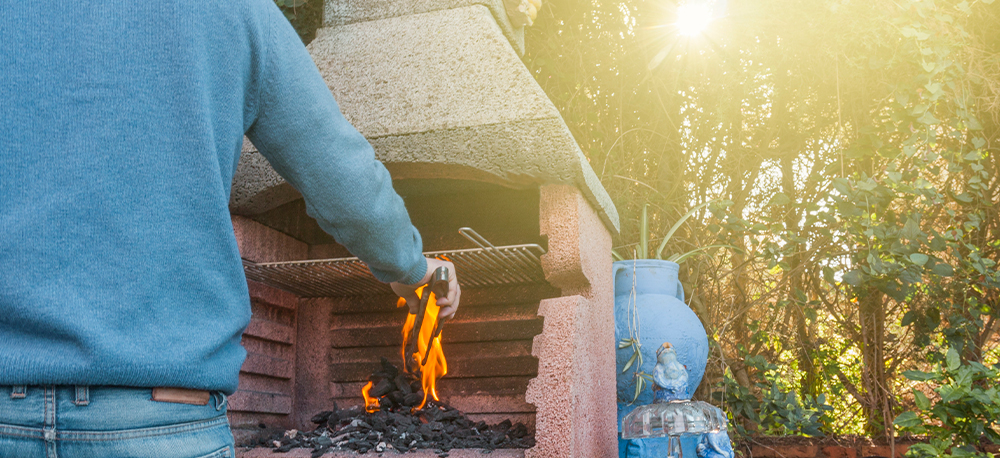
Built-in barbecues are an excellent option for those who want to have a permanent and dedicated space for their barbecues and barbecues. These structures, made of durable materials such as brick, stone or cement, offer numerous advantages compared to portable barbecues.
However, before embarking on purchasing a built-in barbecue, there are several important factors that you should take into account to ensure you make the right choice. In this article, we will explore in detail what aspects to consider before purchasing a brick barbecue.
1. Space and Location of the construction barbecue
The first step before buying a built-in barbecue is to evaluate the space available in your patio, garden or terrace. These structures are usually permanent, so it is crucial to choose a suitable location where the barbecue will fit comfortably and have enough space around it to maneuver while cooking.
In addition to the space available, consider the location of the barbecue in relation to other elements of your outdoor space, such as the house, garden furniture and surrounding vegetation. Make sure there is sufficient ventilation and that the barbecue is away from fire-sensitive areas.
2. Design and Style of the barbecue
Built-in barbecues come in a variety of designs and styles to suit different tastes and architectural styles. Before choosing one, think about the design that best integrates with the overall look of your outdoor area. From modern and minimalist models to rustic and traditional structures, there are options for all tastes.
Also consider whether you want to incorporate additional features, such as storage areas, worktops or sinks, which can add functionality and convenience to your outdoor kitchen space.
3. Construction Material for your construction barbecue
The construction material is a fundamental factor to take into account when purchasing a brick barbecue. The most common materials are brick, stone and cement, each with their own advantages and considerations.
Brick: It is durable and heat resistant, but may require occasional maintenance to maintain its appearance.
Stone: Offers a natural, rustic aesthetic, but can be more expensive and require sealing to protect from stains.
Cement: It is inexpensive and easy to work with, but may not be as aesthetically appealing as brick or stone.
Choose a material that suits your needs and aesthetic preferences, as well as your budget.
4. Size and Capacity of the barbecue
The capacity of your barbecue should be in line with the number of people you plan to cook for regularly. If you usually organize large gatherings or outdoor parties, it is advisable to opt for a larger barbecue that can accommodate multiple foods at once.
In addition to the cooking area, also consider whether you want to include additional space for heating food or keeping dishes warm while cooking.
5. Accessories and accessories for cooking
Some built-in barbecues come with built-in accessories and add-ons, while others allow you to customize and add features according to your needs. Some popular accessories include adjustable grills, storage drawers, lighting systems, and range hoods.
Before you buy, think about what accessories are important to you and make sure the barbecue you choose includes them or has the ability to add them later.
6. Budget for the construction barbecue
As with any purchase, it is important to take your budget into account when choosing a brick barbecue. While these structures are typically more expensive than portable barbecues, they also offer long-term durability and functionality.
Before committing to a purchase, research different options and compare prices to ensure you get the best value for money within your budget range.
7. Installation and Maintenance Considerations
Before purchasing a brick barbecue, take into account the installation and maintenance requirements. You may need building permits or comply with local regulations before installing your barbecue, so be sure to research the specific requirements in your area.
Once installed, keep your barbecue in optimal condition by performing regular maintenance, such as cleaning the grill, inspecting the gas connections (if applicable) and sealing any cracks or fissures in the material.
Buying a built-in barbecue is an investment that can significantly improve your outdoor cooking experience and add value to your outdoor space. Before purchasing, carefully consider all of the factors mentioned above to ensure you choose a barbecue that suits your needs, preferences, and budget.
